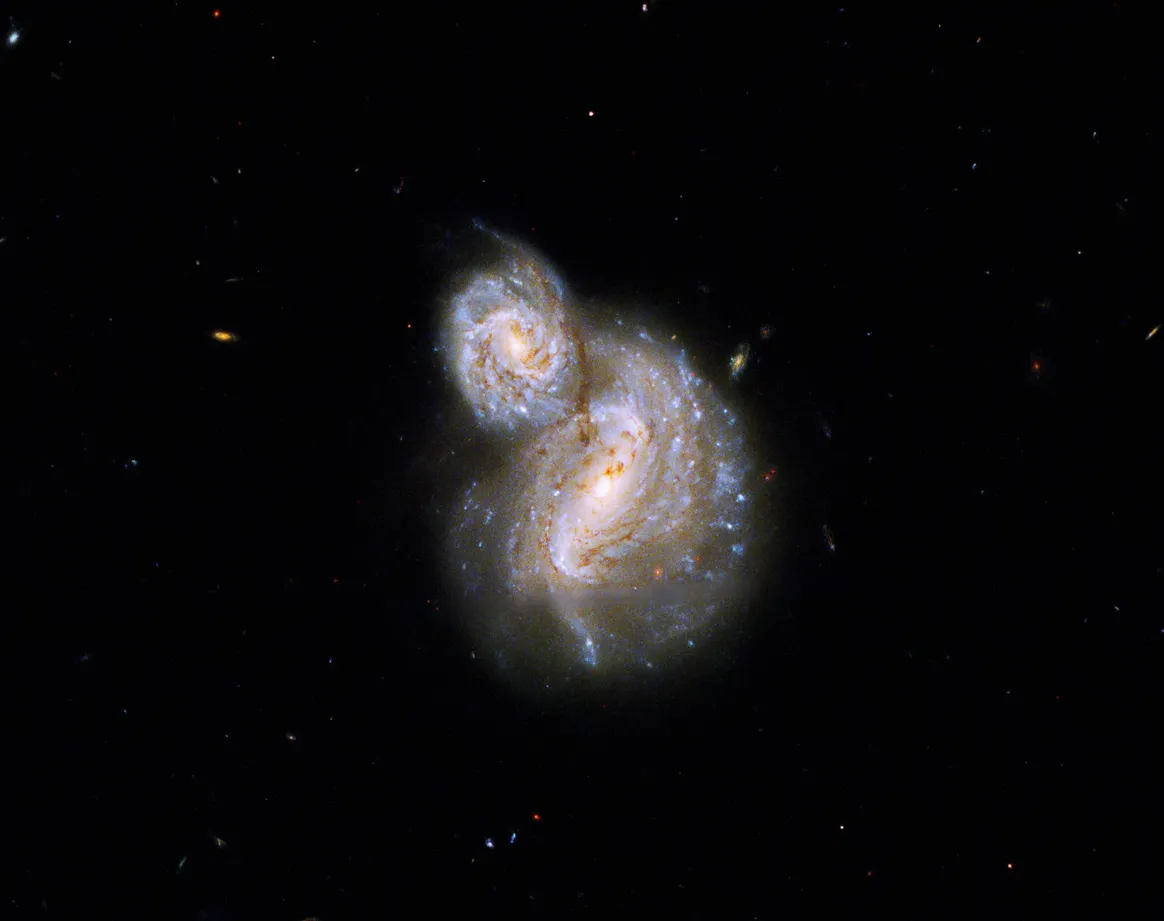*A new image of IC 4271 (also known as ARP 40) taken by NASA's Hubble Space Telescope shows two strange spiral galaxies, * about 800 million light-years away. Smaller galaxies are superimposed on larger galaxies, an active galaxy called the Seyfert galaxy.

The Seyfert galaxy is named after astronomer Carl K. Seyfert, who published a paper on spiral galaxies with very bright emission lines in 1943. We now know that about 10% of all galaxies may be Seyfert galaxies. They belong to "active galaxies" - galaxies with supermassive black holes in the center, which are accreting material and releasing a lot of radiation. The active core of the Seyfert galaxy is the brightest when viewed in light outside the visible spectrum. The larger of the two galaxies is a type II Seyfert galaxy, which means it is a very bright source of infrared and visible radiation.
The data collected in Hubble observations, aimed at studying the role of dust in shaping the energy distribution of low-mass disk galaxies, were used to make this picture. Hubble observed six pairs of galaxies, one in front of the other. Hubble's wide area camera 3 is sensitive to a wide range of light, and its resolution allows researchers to finely map the dust disk of the foreground galaxy in ultraviolet, visible and infrared light.
Since IC 4271 is a type II Seyfert galaxy, visible and infrared wavelengths dominate the image. The color in the image is mainly visible light, while purple represents ultraviolet light and red represents near-infrared light.